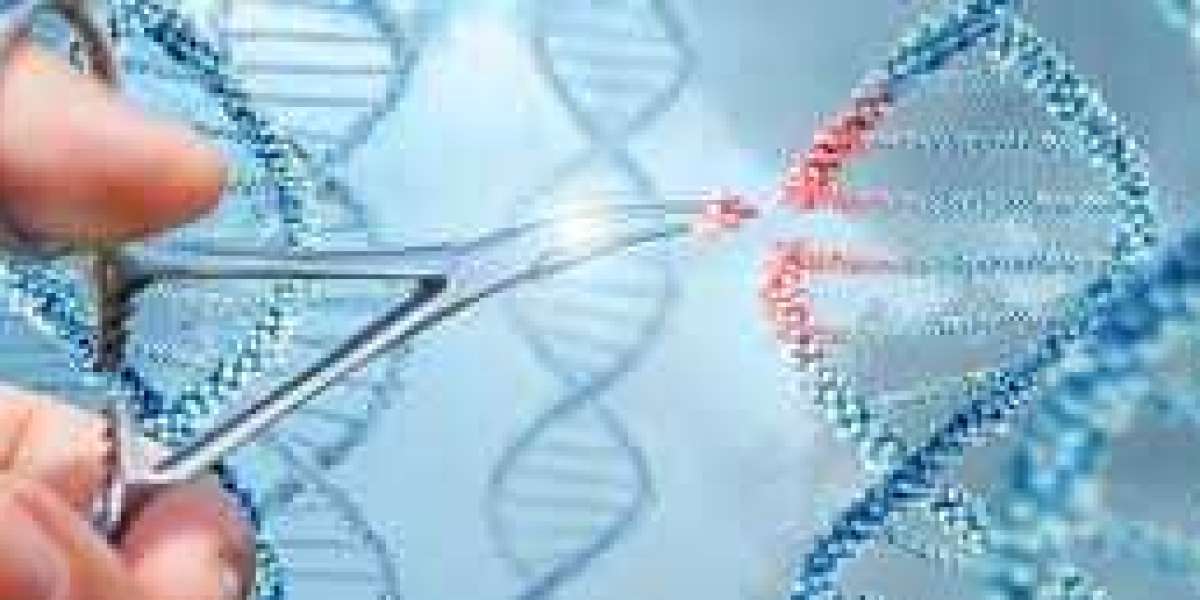In recent years, the field of genetic engineering has undergone a seismic transformation. Among the most revolutionary advancements is human gene editing, a scientific endeavor with the potential to reshape medicine, improve human health, and even redefine what it means to be human. At the heart of this development lies CRISPR-Cas9, a technology that has captured the imagination of scientists, policymakers, and the public alike. However, while gene editing offers immense promise, it also raises profound ethical, social, and scientific challenges.
The Science Behind Human Gene Editing
Gene editing refers to the process of altering DNA sequences within a genome to correct genetic defects, prevent diseases, or introduce desirable traits. CRISPR-Cas9, the most popular tool for gene editing, functions like molecular scissors. It uses a guide RNA to direct the Cas9 enzyme to a specific location in the genome, where it makes a cut. This cut allows scientists to delete, modify, or replace sections of DNA with remarkable precision.
The technology has already been used in laboratories to address genetic conditions such as sickle cell anemia, cystic fibrosis, and certain forms of cancer. Clinical trials involving gene-edited cells have shown encouraging results, sparking hope that these methods could one day cure or prevent inherited diseases entirely.
Applications of Gene Editing
1. Therapeutic Applications
One of the most promising applications of human gene editing is in treating genetic disorders. Diseases caused by single-gene mutations, such as Huntington’s disease or Tay-Sachs disease, are prime candidates for intervention. By repairing or replacing the faulty gene, scientists can theoretically eliminate the condition.
Gene editing also has potential applications in combating infectious diseases. For example, researchers are exploring ways to modify immune cells to make them resistant to viruses like HIV. In a landmark case, a Chinese researcher controversially edited the genomes of twin girls in 2018 to make them resistant to HIV, sparking intense ethical debates worldwide.
2. Enhancement of Human Traits
Beyond therapeutic uses, gene editing could be used to enhance human capabilities, such as improving intelligence, physical strength, or even lifespan. While these possibilities remain speculative, they raise fundamental questions about fairness, societal inequality, and the very nature of human identity.
3. Reproductive Medicine
Gene editing could revolutionize reproductive medicine by allowing parents to prevent the transmission of genetic diseases to their children. In vitro fertilization (IVF) combined with gene editing might enable the selection of embryos free from harmful mutations. However, such applications also bring the prospect of “designer babies,” where traits like eye color, height, or athletic ability could potentially be selected.
Ethical and Social Implications
While the scientific potential of gene editing is vast, it is accompanied by complex ethical dilemmas. These concerns revolve around safety, equity, and the moral boundaries of altering human biology.
1. Safety Concerns
Gene editing is still a relatively new technology, and unintended consequences are a major concern. Off-target edits—where unintended parts of the genome are altered—could potentially cause unforeseen health problems. These risks are particularly concerning when editing germline cells, as changes would be passed on to future generations.
2. Equity and Access
The cost of gene editing technologies is likely to be prohibitively high for many, raising concerns about unequal access. If only the wealthy can afford genetic enhancements or cures, the technology could exacerbate existing social inequalities. The prospect of a genetically “privileged” class is a dystopian scenario that some fear could become a reality.
3. Moral and Religious Objections
Many religious and philosophical traditions question the morality of altering human DNA. Critics argue that tampering with the genome crosses a line by “playing God” or interfering with natural processes. Others worry about the commodification of human life, especially in the context of designer babies or enhancements.
4. Slippery Slope to Eugenics
The ability to select or enhance genetic traits raises the specter of eugenics, a dark chapter in human history. While the goal of gene editing is often framed as eliminating disease, the line between therapy and enhancement can blur. Who decides which traits are “undesirable” or “ideal”? These questions highlight the need for robust ethical guidelines and oversight.
Regulatory and Governance Challenges
The rapid pace of advancements in gene editing has outstripped the development of regulatory frameworks. Different countries have taken varying approaches to the technology, leading to a fragmented landscape.
1. International Variability
While some nations, such as the United States and the United Kingdom, allow gene editing for research purposes under strict regulations, others have banned it outright. This disparity creates challenges for global governance and raises the risk of “editing tourism,” where individuals travel to countries with lax regulations to access unapproved treatments.
2. Need for Global Consensus
The global nature of gene editing’s implications necessitates international cooperation. Organizations like the World Health Organization (WHO) have called for a moratorium on heritable gene editing until robust ethical and scientific frameworks are established. Achieving a global consensus, however, remains a daunting task.
3. Public Engagement
For gene editing to gain widespread acceptance, public engagement is crucial. Transparent communication about the risks and benefits, along with opportunities for public input, can help build trust and ensure that policies reflect societal values.
Recent Developments and Future Directions
Despite the challenges, the field of human gene editing continues to advance at a breakneck pace. Recent breakthroughs include the successful use of CRISPR to treat sickle cell disease in clinical trials and the development of base editing and prime editing technologies, which offer even greater precision.
In the future, gene editing could expand beyond medicine to address broader challenges. For instance, it could play a role in combating climate change by engineering humans to be more resistant to heat or disease in a warming world. However, such applications would require careful consideration of ethical and societal implications.
The Path Forward
To harness the benefits of human gene editing while minimizing its risks, a multifaceted approach is needed. Key steps include:
1. Robust Oversight and Regulation
Governments and international bodies must establish clear guidelines to ensure the safe and ethical use of gene editing. This includes stringent oversight of clinical trials and a ban on unethical practices like germline editing until the technology is proven safe.
2. Ethical Frameworks
Scientists, ethicists, and policymakers must work together to develop ethical principles that guide the use of gene editing. These principles should prioritize safety, equity, and respect for human dignity.
3. Investment in Research
Continued investment in research is essential to improve the safety and efficacy of gene editing technologies. This includes studying long-term effects and developing new tools to minimize off-target edits.
4. Public Dialogue
Engaging the public in discussions about gene editing is crucial to ensure that policies reflect societal values. Education and transparency can help demystify the technology and address concerns.
Conclusion
human gene editing represents one of the most exciting and contentious frontiers of modern science. Its potential to eliminate genetic diseases, enhance human capabilities, and improve quality of life is unparalleled. However, these promises come with significant ethical, social, and scientific challenges that cannot be ignored.
As we stand on the cusp of a new era in biotechnology, the decisions we make today will shape the future of humanity. By balancing innovation with responsibility, we can ensure that gene editing fulfills its promise while respecting the values and diversity that define us as human beings.








